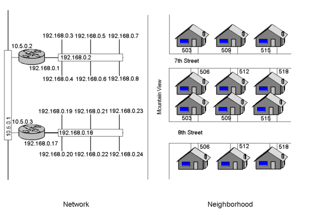Often used interchangeably in the non-technical community, routing and switching represent two fundamentally different concepts in network solutions. The devices used to perform these functions look somewhat similar, but they each have distinctly different jobs. Routing involves moving data among the various networks. Switching involves moving data between devices that exist within the same network.

Diving in a little deeper, routers tend to be a more sophisticated device than a switch. Traditional routers are designed to join local area networks (LANs) and wide area networks (WANs). Routers evaluate the TCP/IP packets on a network and identify the source and target IP addresses; then they forward these packets to their destination. They also offer NAT (network address translation) which allow masking of an IP address and provide security through a firewall.
Switches, on the other hand, connect devices within a network. They use MAC addresses to forward data. They use packet switching to receive, process and forward data to the destination device. They forward data only to one or multiple devices that need to receive it, rather than broadcasting the same data out of each of its ports. They allow for network segmentation to make a network more efficient by reducing the size of the broadcast domain.
To wrap it up in a consumable analogy, try thinking of it this way- Think of switches as the streets in a neighborhood and routers as the intersection of streets. Each house on the street has an address with a range of addresses within the block. The router knows the neighborhoods and connects them together through highways and freeways.
Be sure your network is running at optimal capabilities:



